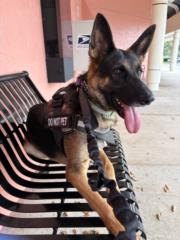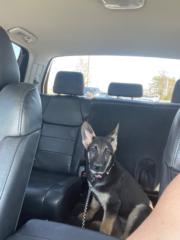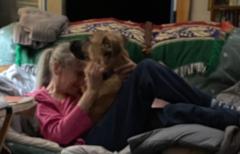Mar 5 • General discussion
Understanding the "Velcro Dog" Phenomenon
🩹German Shepherds are often called 'Velcro dogs,' and for good reason! They form incredibly strong bonds with their families and crave close proximity. This isn't just about affection; it's deeply rooted in their history as working dogs bred to cooperate closely with their handlers.
What to Watch For: 👁🐶
- Following you everywhere: From the kitchen to the bathroom, your Shepherd might be your constant shadow.
- Leaning on you: This can be a sign of affection, but also a way of seeking reassurance or physical contact.
- Anxiety when separated: Some Shepherds can develop separation anxiety if their need for closeness isn't balanced with independent time.
How to Manage It: 📣
- Provide structured alone time: Start with short periods and gradually increase them. Use a safe space like a crate or a designated room.
- Mental stimulation: A tired mind is a less anxious mind. Provide puzzle toys, training sessions, and interactive games.
- Reinforce calm behavior: Reward your Shepherd when they are relaxed and independent.
- Do not overly reinforce the behavior: While you love their closeness, you should not reinforce the behavior when they are overly clingy.
- Training: Training your German Shepherd will allow you to have more control over their behaviors.
Key Takeaway: The "Velcro dog" trait is a hallmark of the breed, but understanding its roots and managing it effectively will lead to a happier, more balanced relationship for both you and your German Shepherd."
Now, let's hear from you! 👂
How does your German Shepherd show their "Velcro dog" tendencies? And what strategies have you found most effective in balancing their need for closeness with healthy independence?
Share your experiences and tips in the comments below!
4
13 comments

skool.com/germanshepherds
Unlock exclusive tips and secrets to master German Shepherd care. Join our elite community and transform your bond with your GSD! 🐾
Powered by





